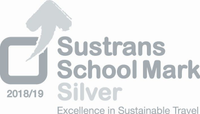"The important thing is not to stop questioning. Curiosity has its own reason for existing."— Albert Einstein
What is the World Around Us?
The World Around Us is one of the six Areas of Learning in the Northern Ireland Curriculum. It focuses on the development of knowledge, skills and understanding in Geography, History, Science and Technology. Fane Street PS aims to develop a topic/theme-based approach to this area of learning, making relevant connections across all areas of learning, while ensuring breadth and balance.
WAU aims to relate to children’s everyday lives, their homes, families, other people, the local environment and community and the wider world. Through different types of play, active, experimental learning opportunities and practical activities children will be provided with meaningful experiences.
These will stimulate their senses; encourage them to ask questions, to explore and wonder at their environment. They will undertake investigations that engage their interests.
What are our aims in teaching WAU?
All pupils are encouraged to:
· Find enjoyment in the World Around Us.
· Build on children’s natural curiosity.
· Express their ideas and feelings, using appropriate language.
· Develop thinking skills.
· Develop concepts which will aid organisation of ideas and develop intellectual skills.
· Develop the ability to give and accept positive, constructive criticism and praise.
· Develop the social skills required to work as members of a team as well as the ability to work independently e.g. through paired and group planning and testing.
· To develop in children the skills of enquiry, investigation, analysis, evaluation and presentation
· Connect all areas of learning through thematic WAU topics
The World Around Us is presented as four inter-related strands that connect learning.
· Interdependence
· Place
· Movement and Energy
· Change Over Time
The three contributory elements within the World Around Us are:
Geography
This explores the relationship between the earth and its people through the study of the environment, place and space. It develops knowledge of places and environments throughout the world, an understanding of maps and a range of investigative and problem-solving skills both inside and outside the classroom. Our children will be provided with opportunities to develop knowledge and understanding of their place in the world, other places, and the processes which affect the people, conditions and life in that place. They will explore ideas about people, jobs, the weather and the environment both locally and globally and begin to consider their part in maintaining a sustainable world.
History
This is concerned with the concepts of sequence and time and with evidence which allows us to find out what happened in the past. The concepts of chronology, change/continuity, empathy and cause and effect will be developed through investigation of life in the past. Children will be provided with opportunities to gain an awareness of their past and changes which have occurred over time through examining evidence, looking at photographs, watching TV and multimedia clips, visitors, educational trips and listening to stories. Our children will recognise the importance of evidence in giving a picture of the past but will understand that there can be different interpretations of this depending on how it is viewed.
Science and Technology
This aims to stimulate a child’s curiosity in finding out why things happen in the way they do. It teaches methods of enquiry and investigation to stimulate creative thought. Our children will learn to ask scientific questions and begin to appreciate the way science will affect their future on a personal, national, and global level. They will have opportunities to develop the skills of Science and Technology and to develop awareness of the relevance and importance of Science and Technology in everyday life in finding out about themselves, the environment, the material and physical world.
The World Around Us Overview 2025-2026
| Name | Format | ||
|---|---|---|---|
| Files | |||
| WAU topic overview WHOLE SCHOOL.pdf |






